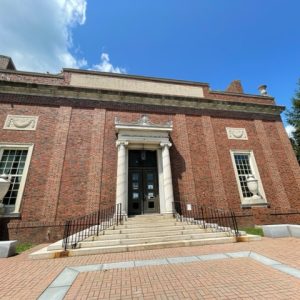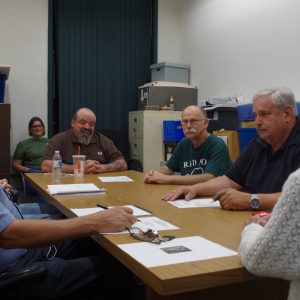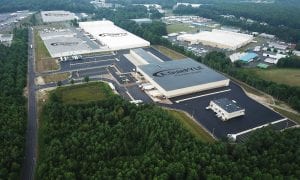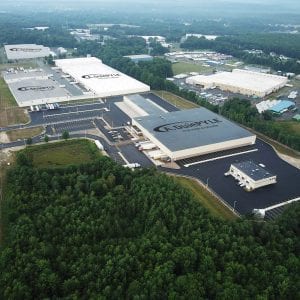
The building being targeted for demolition is the former Foster House Tavern, left, a building with a long connection to the city’s railroad history and which was once a rooming house and tavern serving railroad workers. (Photo by chief photographer Frederick Gore)
WESTFIELD – The Historical Commission will seek an opinion from city officials to determine the outcome of a 3-3 vote last night on a Certificate of Historical Review for a Northside industrial expansion project.
Westfield Electroplating Company Inc., (WEPCO), located at 68 North Elm Street, petitioned the commission for the certificate to expedite the expansion of their existing facility and construct a 7,300 square-foot shipping and receiving addition to the existing facility.
The project includes the demolition of the former Foster House restaurant building, a component which required review by the Historical Commission.
Wednesday night, WEPCO owner Michael P. Stolpinski was granted a special permit by the Zoning Board of Appeal under Article IV, Section4-10, paragraph 3, which allows the expansion or alteration of preexisting, non-conforming structures by more than 10 percent of the current square-footage. The current WEPCO facility is 36,157 square feet in area.
Frank A. DeMarinis, P.E., the owner of Sage Engineering & Contracting of Servistar Industrial Way, presented the project details to both boards Wednesday and Thursday nights.
The ZBA voted Wednesday to approve the special permit with five findings and 11 conditions attached, including a condition that the Historical Commission have access to the Foster House to take photographs. Last night Stolpinski expanded that condition offering the commission the opportunity to take historical artifacts for preservation and display at some location.
The ZBA also found that demolition of the Foster House and the paving of that area will be a detriment, but that as a whole, the project will not be substantially more detrimental to the existing neighborhood and that addressing vehicular safety in the heavily traveled section of the city by expanding the turning area for trucks on the company’s property outweighed the board’s concern about the impact of the Foster House demolition.
“The (original) idea was not for the building to come down,” Stolpinski said. “We have to expand. We’ve been cramped for years. The opportunity is there now, the low interest rates, our business is strong.”
DeMarinis said that if Stolpinski “could save the building, he would, but that is not practical. He has no other choice.”
Stolpinski said the foster house is deteriorating and the cost of rehabilitating the structure is “megabucks. There is no sprinkler system, the interior is a wood structure, it’s a fire hazard.”
The Foster House building, constructed in 1843, is on the city’s notable homes list.
“Our mission,” Commission Chairwoman Kitt Milligan said, ” is to try to preserve and protect historical buildings and the Foster House qualifies for that. The Northside of the city has very few historical buildings which have been preserved. That is a concern to residents. We’re here tonight to look at any way of preserving the Foster House. We’re not here to be enemies. Our mission is to find some compromise.”
Stolpinski and DeMarinis said the plan did not work without the demolition of the building to increase the turning area on the property for trucks and tractor-trailer units making deliveries and picking up finished product at the plating company, which now has 170 employees.
“We want to work with you guys,” Stolpinski said, “to do what we can to make you happy.”
Milligan said “so don’t tear down the building.”
“So get me a buyer who’d give me $3.5 million for my building and I’ll move up to Servistar Industrial Way,” Stolpinski said. “I need to expand.”
The commission voted 3-3 on the Certificate of Historical Review and plans to seek an opinion of the deadlocked vote on the project.
The petition may have to wait for a 90 day period without the certificate before beginning demolition. However, that 90-day period begins when the petitioner submits an application, which in this case was a month ago. The Foster House is currently being assessed for hazardous materials since it was common to use asbestos and other materials which are currently banned in building construction. That assessment and hazardous material mitigation is expected to take six to eight weeks, or about at the end of the 90-day wait period.







